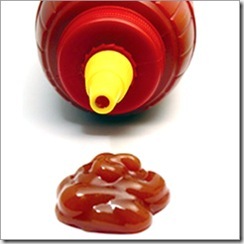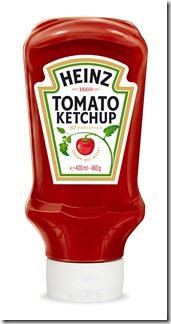I don’t want to blame “Porter”, although his promotion of the Lowest Cost Provider has confused and caused a few problems over the years. The idea is blindingly simple, and once known is obvious, the Lowest Cost Provider wins.
If you have the lowest costs you can sell at Market Price for more Profit or you can sell below Market Price and win market share grow your volume and make more Profit. Great!
However when you turn the company over to the Accountants, take care.
Financial Engineering was another FAD that I survived.
But, only just!
Enter the Cost Accountants and let the dance begin.
Ketchup has the key ingredient of Tomatoes.
Our Cost Accountants showed how we could reduce costs by reducing Tomatoes in our Ketchup. We put 10% less Tomatoes on our Ketchup and changed to a lower cost if lower quality Tomatoes. Total saving was 20%. No complaints, so apparently the consumer didn’t notice.
‘Flushed’ with success, the Cost Accountants were back with more proposals “Packaging, Storage and transportation” cost savings. We changed from a bottle size of 500 grams to 1000 grams; Marketing not only supported the change but insisted we use 1200 grams to enable a 20% extra free campaign. Our Consumers seemed to accept the changes, but our Distributers, Wholesalers and Retailers grumbled about ‘problems’ in the background.
To achieve all of the changes, involved some costs, but these were justified by the Cost Accountants Graphs, Charts and Tables all of which agreed that break-even, cost recovery and profits would flow shortly. Marketing agreed and talked of Product “consolidation”, improved Margins, Market share capture and increased Profits. In Sales we just raised our eyebrows.
After a set of disappointing Sales results, the Cost Accountants cut a further 15% of Tomatoes used in our Ketchup, we now bought our Key ingredient on the open Market at a “Tomatoes Commodity Auction”; it came from any part of the world and was always the cheapest they could find.
During a Product Management review the Cost Accountants refused to allow a new Self-seal dispenser to be used as it put 4 cents on the cost line. But, it was being advertised heavily on TV by our Competitor.
 Our next two quarters Sales results were terrible.
Our next two quarters Sales results were terrible.
Big and loyal customers were only placing maintenance orders, or cancelling. Or, they were trying to return stock they described as ‘non-spec’. In Sales we knew what was wrong, but nobody listened.
So, Sales organised a Customer Engagement Event (paid for by Marketing)
and brought our Executives, our Distributors and our Consumers together Face-to-face:
“You can’t taste the Tomatoes!”;
“the bottles are too big for their fridge”;
“We can’t shelf the product!”;
“The Box is too heavy to lift!”
In summary “We don’t like your Product, anymore!”
This Parable really took place in Information Technology;
it was not “Ketchup”.
The moral of the story is:
to “Listen to your Customer”
and put tasty and plentiful ‘Tomatoes’
in your ‘Ketchup’.
Heinz® Tomato Ketchup, America's Favorite Ketchup®,
is made with only the firmest, juiciest, freshest tomatoes.









